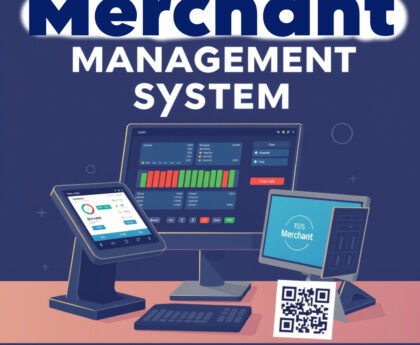Understanding Neo Banks/Digital Banks:
Neo banks, also known as digital banks, are financial institutions that operate exclusively online or through mobile applications, without traditional physical branches. These banks leverage technology to provide a range of banking services, from basic transactions to more sophisticated financial products. Unlike traditional banks, neo banks focus on delivering a seamless, user-friendly digital experience.
How They Pose Challenges to Traditional Banks:
- Cost Efficiency:
- Neo banks have lower operating costs as they don’t maintain physical branches. This allows them to offer competitive fees and rates to customers.
- User-Centric Approach:
- Digital banks prioritize user experience, often providing intuitive mobile apps and innovative features that appeal to tech-savvy consumers.
- Agility and Innovation:
- Neo banks can swiftly adapt to changing market trends and implement innovative features due to their agile and technology-driven nature.
- Global Accessibility:
- Many digital banks operate internationally, offering seamless cross-border transactions without the need for extensive infrastructure.
Business Models:
- Fee-Based Models:
- Neo banks may charge fees for certain services, such as expedited fund transfers, foreign exchange, or premium account features.
- Partnerships:
- Some digital banks collaborate with fintech partners to offer a broader range of financial services, expanding their product offerings without in-house development.
- Subscription Models:
- A few neo banks introduce subscription-based models where users pay a regular fee for premium services and additional features.
Size and Reach:
- The size of neo banks varies widely, with some operating on a national scale and others expanding globally. Market share is growing steadily in many regions.
Pros and Cons:
Pros:
- Cost-Effective:
- Lower operating costs often lead to reduced fees and better interest rates for customers.
- User-Friendly Interfaces:
- Intuitive mobile apps and interfaces make digital banking convenient and accessible.
- Innovative Features:
- Neo banks often pioneer new features, such as budgeting tools, round-up savings, and real-time transaction notifications.
- Global Accessibility:
- Many digital banks enable users to transact internationally without significant fees.
Cons:
- Limited Physical Presence:
- Lack of physical branches may pose challenges for users who prefer face-to-face interactions.
- Regulatory Challenges:
- Neo banks must navigate complex regulatory environments, which can vary from country to country.
- Dependence on Technology:
- Reliance on technology means potential service disruptions and cybersecurity risks.
- Limited Product Offerings:
- Some neo banks may have a more limited range of products compared to traditional banks.

Examples of Neo Banks/Digital Banks:
- Revolut:
- Website: Revolut
- Country of Origin: United Kingdom
- Brief: Revolut offers a range of financial services, including currency exchange, spending analytics, and cryptocurrency trading.
- N26:
- Website: N26
- Country of Origin: Germany
- Brief: N26 provides a mobile banking platform with features like real-time banking alerts, budgeting tools, and global spending.
- Chime:
- Website: Chime
- Country of Origin: United States
- Brief: Chime is known for its no-fee banking services, early direct deposit, and automatic savings features.
- Monzo:
- Website: Monzo
- Country of Origin: United Kingdom
- Brief: Monzo offers mobile banking with features like instant spending notifications, budgeting tools, and fee-free international spending.
- Ally Bank:
- Website: Ally Bank
- Country of Origin: United States
- Brief: Ally Bank is an online bank providing a range of financial products, including checking and savings accounts, auto loans, and mortgages.
- WeBank:
- Website: WeBank
- Country of Origin: China
- Brief: WeBank is a digital bank in China that focuses on providing online financial services, including loans, wealth management, and microfinance.
These examples illustrate the diversity of neo banks, each offering unique features and services to cater to the evolving preferences of consumers in different regions.
Here are some examples of neo banks/digital banks in India:
- Niyo:
- Website: Niyo
- Brief: Niyo offers digital banking solutions, including salary accounts with benefits like tax-saving options, meal vouchers, and travel cards.
- Open:
- Website: Open
- Brief: Open provides business banking solutions with features like automated bookkeeping, invoicing, and seamless integration with other business tools.
- Kotak 811:
- Website: Kotak 811
- Brief: Kotak 811 is a digital savings account offered by Kotak Mahindra Bank, allowing users to open an account online with minimal documentation.
- Yono by SBI:
- Website: Yono
- Brief: Yono (You Only Need One) is State Bank of India’s digital banking platform offering a range of financial products and services.
- DBS Digibank:
- Website: DBS Digibank
- Brief: DBS Digibank is a digital-only bank by DBS Bank India, providing services like zero-balance accounts, instant fund transfers, and personalized financial insights.
- Paytm Payments Bank:
- Website: Paytm Payments Bank
- Brief: Paytm Payments Bank is an extension of the Paytm ecosystem, offering savings accounts, fixed deposits, and digital wallets.
- Airtel Payments Bank:
- Website: Airtel Payments Bank
- Brief: Airtel Payments Bank provides banking services through its mobile app, allowing users to open savings accounts and conduct digital transactions.
- Dhani:
- Website: Dhani
- Brief: Dhani is a personal finance app that offers instant personal loans, healthcare services, and a digital wallet.
- RBL MoBank:
- Website: RBL MoBank
- Brief: RBL MoBank is a digital banking platform by RBL Bank, providing services like digital savings accounts, fixed deposits, and mobile-based payments.
- FamPay:
- Website: FamPay
- Brief: FamPay is a neo bank focused on teenagers, offering a digital wallet and prepaid card with parental controls and features for financial education.
These examples showcase the diversity of digital banking offerings in India, catering to various segments and needs, from personal finance to business banking.




